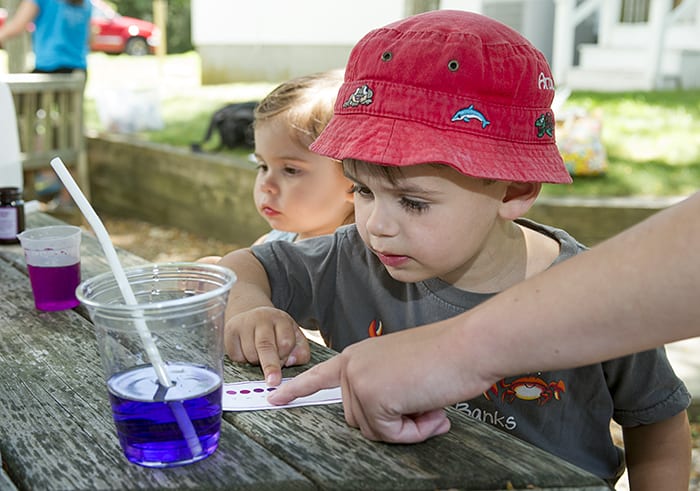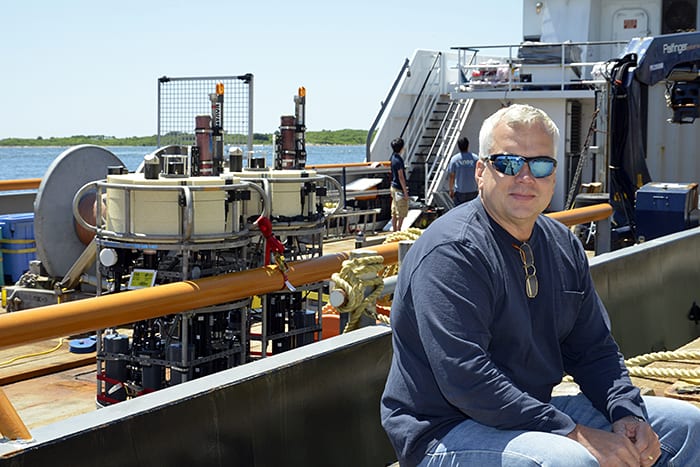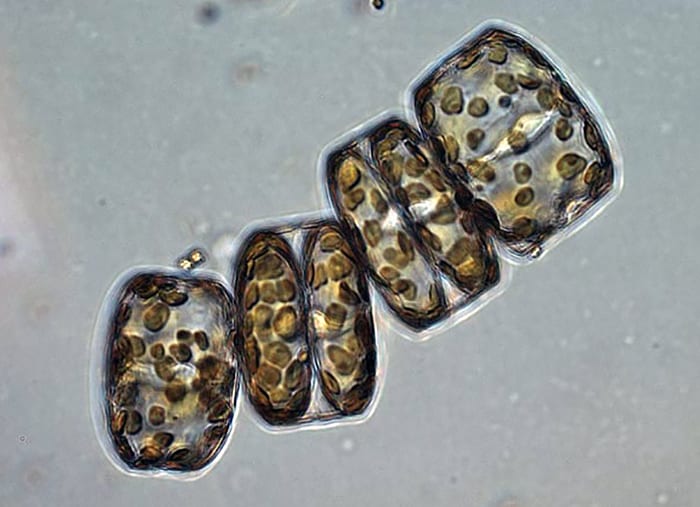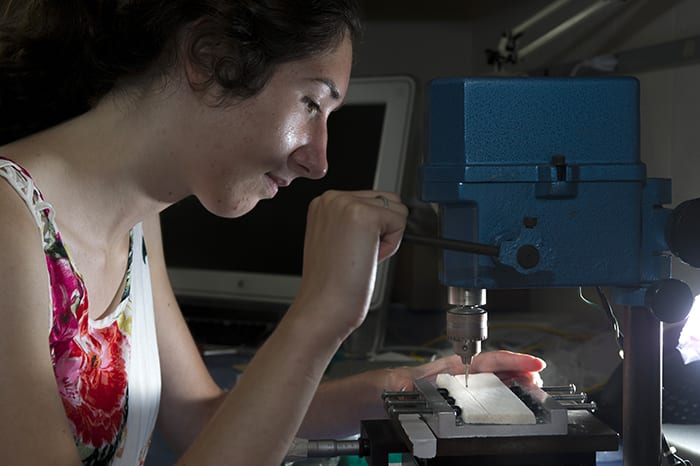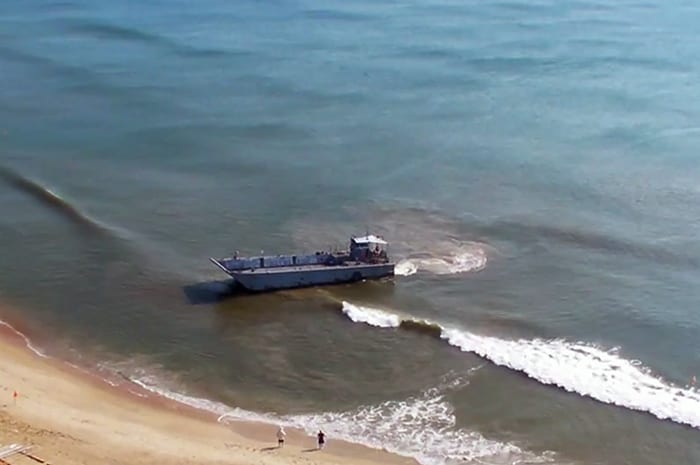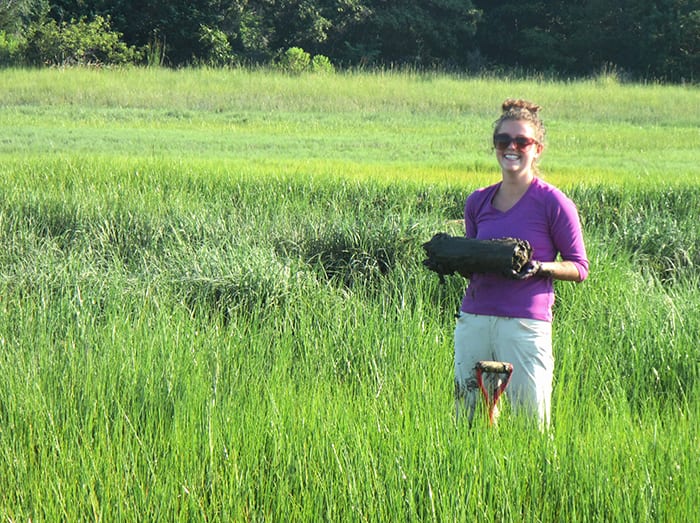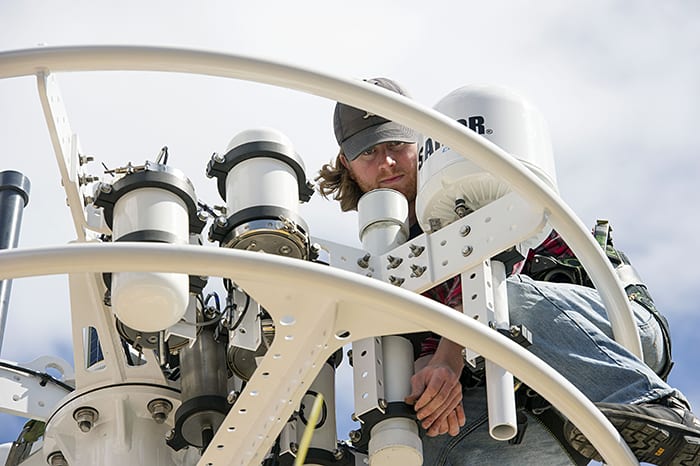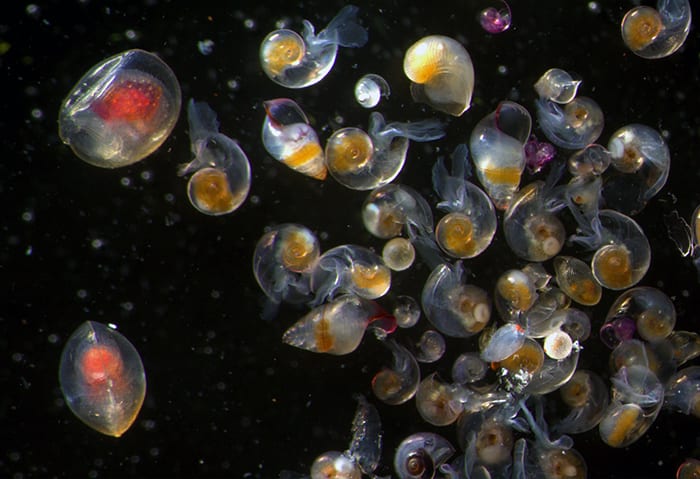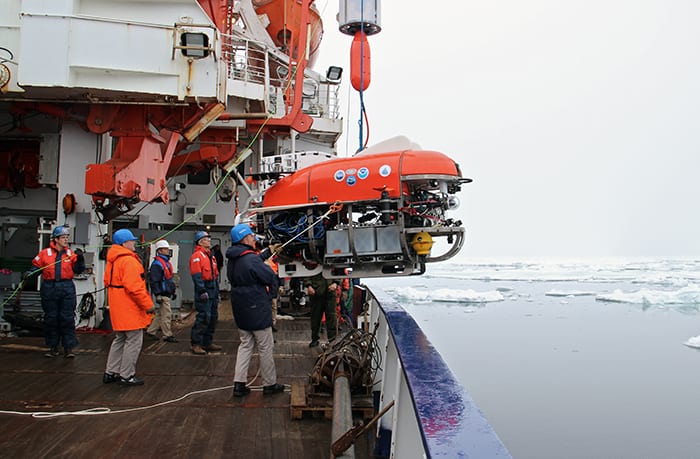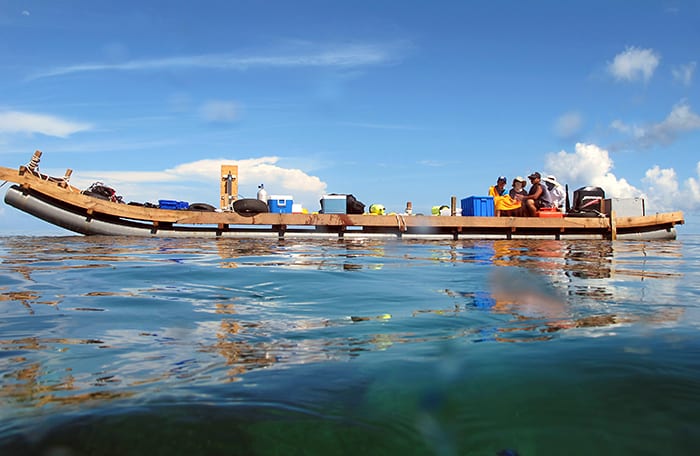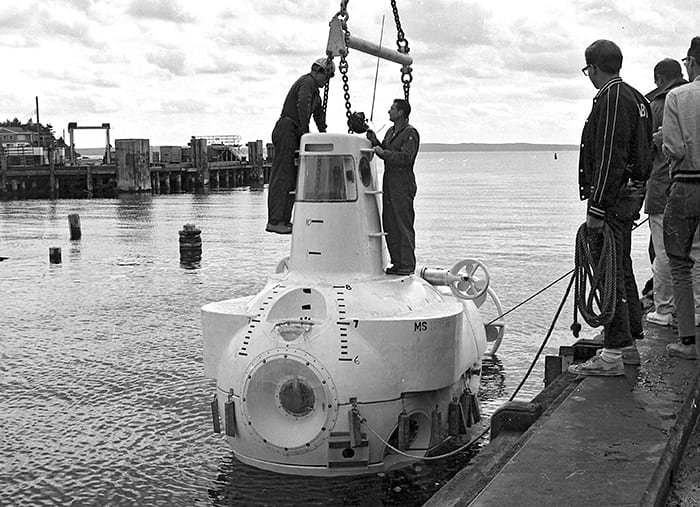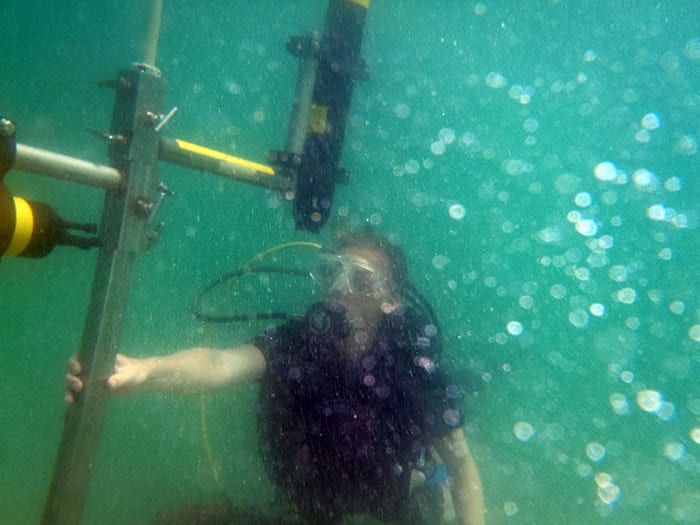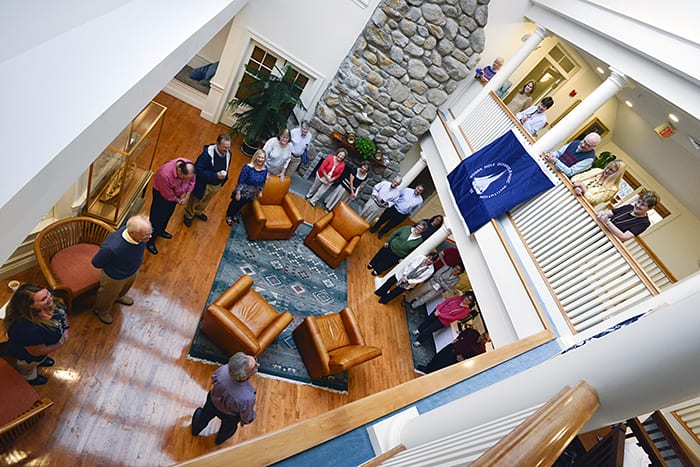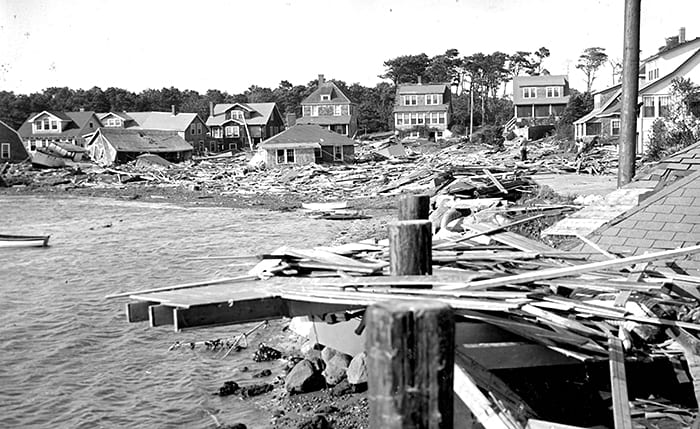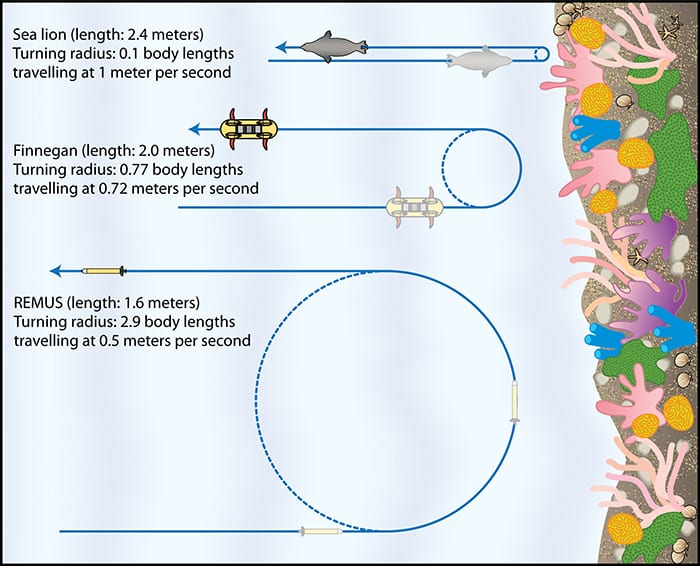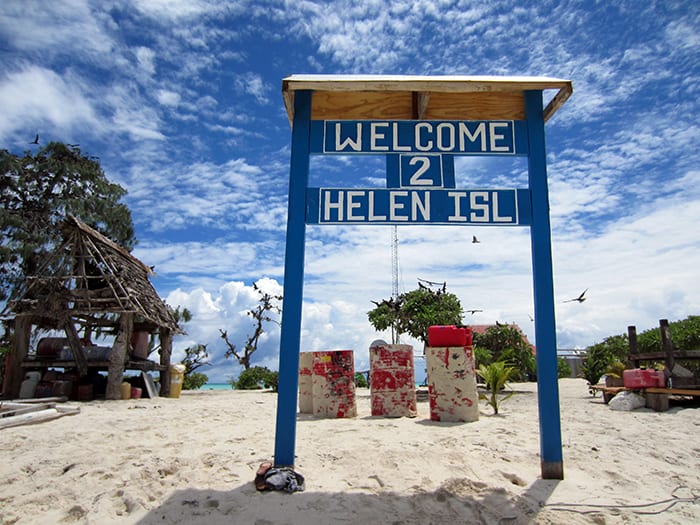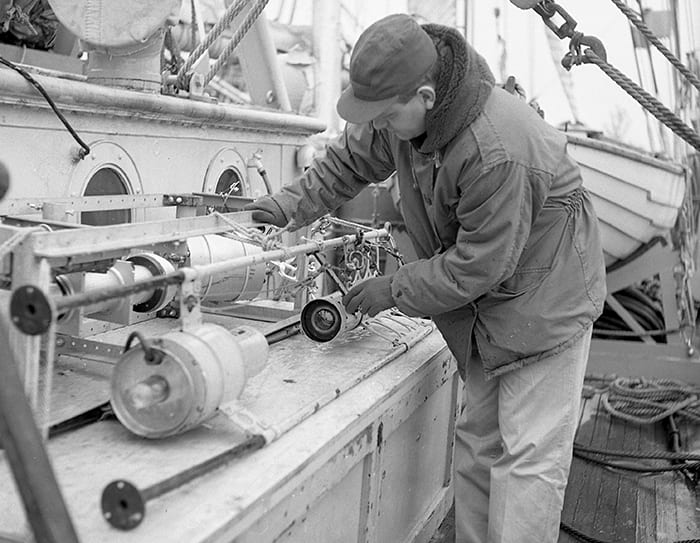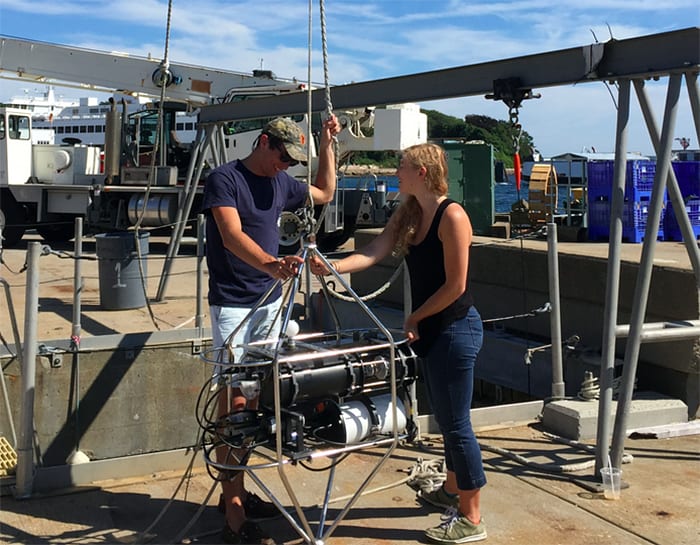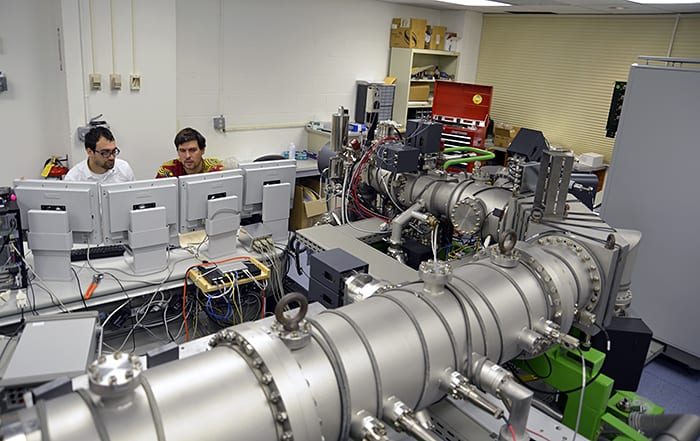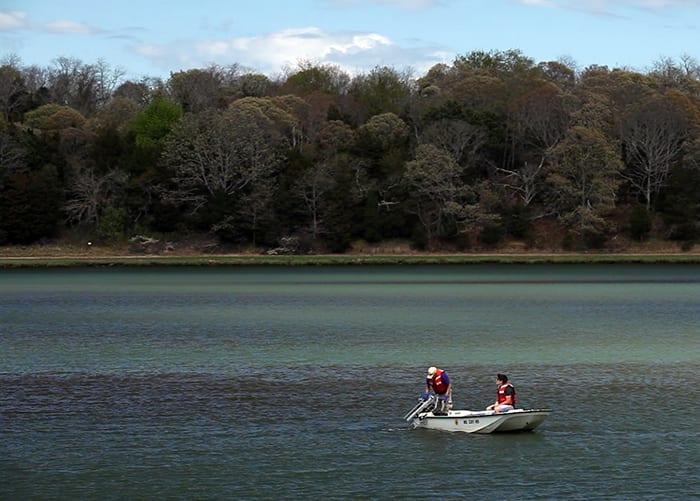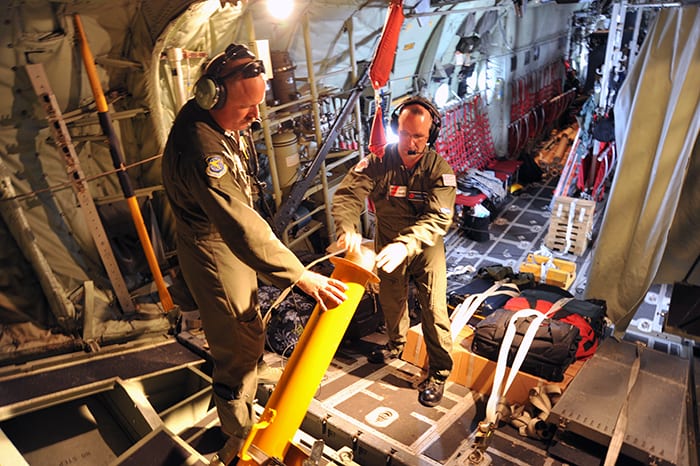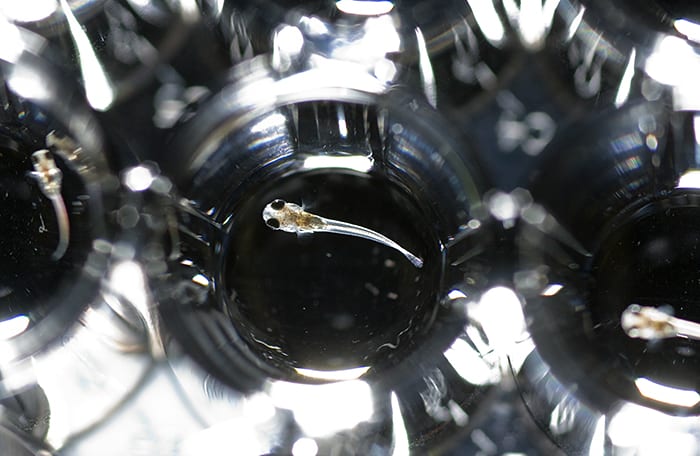Multimedia
Science is Fun
Two young visitors enjoyed learning about ocean acidification at the WHOI Ocean Science Exhibit Center during a Splash Lab this summer. With exhibits geared for all ages the Center is…
Read MorePioneering Array
WHOI’s Ocean Observatory Initiative (OOI) Program Manager, Paul Matthias, sits in front of two coastal surface-piercing profilers. Deployment of the instruments recently marked the completion the six-year design and build…
Read MoreMarine Infochemicals
In a recent study, WHOI scientists found that single-celled marine phytoplankton like these Melosira sp. can release “infochemicals” that signal marine bacteria to rev up their metabolisms and decompose phytoplankton…
Read MoreTurtleCam
Exploring the secret life of endangered leatherback turtles
Read MoreCoral Clockworks
Corals put down growth layers, similar to tree rings, that record the environmental conditions they grew in. Using core samples, scientists can learn about current health conditions on a reef…
Read MoreRip-roaring Channel
Rip currents pose a threat to public safety, so officials are interested in ways to predict when and where they form, but it’s difficult to study the dynamic and intermittent…
Read MoreOutstanding in Her Field
Maggie Capooci from the University of Scranton spent her time as a WHOI Summer Student Fellow evaluating how marsh ecosystems respond to restoration of tidal connectivity. Under-sized culverts beneath roads…
Read MoreOn Top of His Work
WHOI engineer Jared Schwartz installed instruments on a Pioneer Array surface buoy tower prior to the buoy being deployed on the continental shelf and slope south of New England. The…
Read MoreSea Butterflies
These marine snails are called pteropods (from the Greek words meaning “wing foot”) or “sea butterflies” because of their winglike swimming appendages. Masses of pteropods drift with currents in the…
Read MoreSeeing Under Sea Ice
The Nereid Under Ice (NUI) vehicle is launched from the Alfred Wegener Institute’s ice-breaker Polarstern during an expedition in July of 2014. NUI is remotely operated by pilots aboard a surface…
Read MoreMakeshift Lab
During a trip to Dongsha Atoll south of Taiwan in the South China Sea last year, researchers from Anne Cohen’s lab fashioned a floating lab out of wooden planks and…
Read MoreEarly Alvin
In the summer of 1964 the original DSV Alvin underwent dockside water tests in Woods Hole. Marvin McCamis, one of the original Alvin pilots (second from left) joined the Institution staff…
Read MoreDiving into Her Work
MIT-WHOI Joint Program graduate student Melissa Moulton and colleagues in the PV Lab at WHOI undertook an unprecedented study to learn how, when, and where potentially dangerous rip currents form on…
Read MoreWarm Welcome
Mark Abbott, the tenth President and Director of WHOI, arrived at the Institution for his first official day on Thursday, October 1, to a welcoming committee of his new co-workers…
Read MoreA Storm’s Wrath
In September 1938 ,a hurricane struck New England with little warning, bringing wind gusts to 186 mph. The intense storm killed hundreds and devastated Cape Cod, including Silver Beach in…
Read MoreCopy Cat
Turtles, dolphins, and seals are masters at maneuvering in the water. So it’s no surprise that vehicle deisgners occasionally look to them for inspiration when trying to make new generations…
Read MoreWay-Out Reef
Researchers in WHOI scientist Anne Cohen’s lab are investigating potential impacts on corals from changing ocean conditions, including warmer and more acidic seawater. As part of the work, Hannah Barkley,…
Read MoreCamera Ready
David Owen adjusted an early 70mm deep sea camera in the summer of 1959 aboard the sailing ketch R/V Atlantis, WHOI’s original research vessel built solely for marine science. Owen…
Read MoreSummer Homework
WHOI summer guest students Gabriel Roy Liguori and Fiona Hopewell assisted in a test deployment of a new instrument designed to make measurements of photosynthesis and respiration, the basic currency…
Read MoreOld As Water
MIT-WHOI Joint Program graduate student Adam Sarafian (left) and geologist Horst Marschall test samples of meteorites in the Northeast National Ion Microprobe Facility. Last year, the pair published a paper…
Read MoreZ is for Zebrafish
Zebrafish share almost 70 percent of genes with humans, so they are ideal models to study genetics of human development and disease. In addition, they are easy to maintain and…
Read MoreSeeing Red
Dave Kulis and Liann Correia, research assistants in the lab of biologist Don Anderson, retrieve a CTD—an instrument that measures conductivity, temperature, and depth—from Salt Pond, part of the Cape Cod…
Read MoreLoading Alamo
Aboard a U.S. Air Force “Hurricane Hunter” airplane at 5,000 feet, WHOI scientist Steve Jayne (right) and Chief Master Sergeant Mike McDonald load an ALAMO (Air-launched Autonomous Micro Observer) profiling…
Read MoreFish-Eye View
A newly-hatched kilifish sits in a glass dish in the laboratory of WHOI biologist Ann Tarrant. These small fish are common in salt marshes and tidal creeks and live in…
Read More
